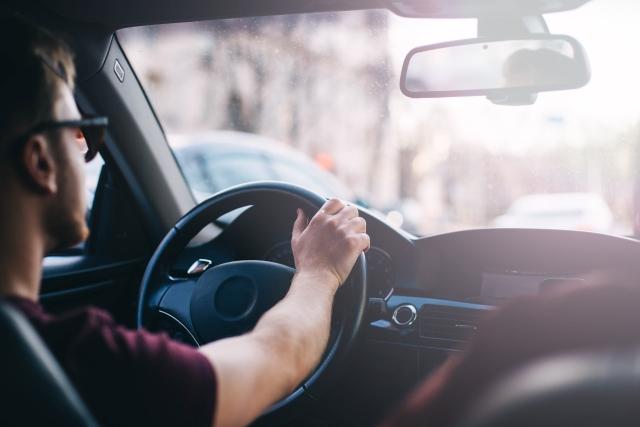J.D. Power Observation: Three Transitions
The Chinese auto industry as a whole has entered a "new normal". In addition to the overall slowdown in sales, the overall profits of manufacturers and dealers have also declined year by year. According to the relevant research data of the authoritative automobile industry rating and consulting agency JD Power, the average gross profit margin of dealers' bicycles this year is negative 490 yuan. If we compare “cost” and “benefit” to a pair of scissors, the gap between the two will become larger and larger, forming a “scissors gap”. How to make the "scissors gap" smaller? At the JD Power 2017 China Automotive Sales Satisfaction Study (SSI) press conference and seminar held recently, Hu Xiaolong, general manager of JD Power 's China Automotive Retail Consulting Division, gave relevant suggestions.

Hu Xiaolong, general manager of JD Power's China Automotive Retail Consulting Division, analyzes the current trend of China's auto retail
The "scissors gap" trend is expanding, and dealers are in a "sub-health" state
Under the "slow growth" trend, the profits of the auto retail business are getting thinner. According to the JD Power 2017 China Dealer Satisfaction Study (DAS), in the past 7 years, the cost of bicycle marketing has continued to rise, while the "sales profit" and "after-sales service profit" have both declined or remained flat. "Cost" The trend of "scissors difference" from "revenue" is becoming more obvious.
In addition, the "quantity" of the auto retail business has also entered a platform period. From 2012 to the present, the dealers' "average monthly delivery times to the factory" and "average monthly sales volume" have continued to flatten out, with no obvious changes and fluctuations. Hu Xiaolong pointed out: "In fact, the overall sales of Chinese cars are increasing every year. Why aren't the sales volume implemented in the dealer's single store sales, and the profit is not implemented in the after-sales business? It shows that the entire business system has shortcomings and loopholes."
Under the influence of the "platform period", only 56% of the dealers in the industry are profitable, 21% of the dealers are at a "break-even point", and the remaining 23% of dealers are in a "loss" state. Hu Xiaolong cited relevant US data to highlight China's situation: "During the 2008 world financial crisis, US car sales fell by 20%, but only 10% of unprofitable dealers." "Scissors gap", "platform period", " "Comparison of profit ratios between Chinese and American dealers" shows that China's auto dealers are in a "sub-health" state.
Three "transformations" to enhance retail channel operation capabilities
How to make dealers and manufacturers "check gaps and fill in leaks" as soon as possible to get rid of the "sub-health" status, Hu Xiaolong gave three "change" suggestions.
Change one: From "business center" to "consumer center"-solve business problems from the "consumer", rather than from the "business" to solve consumer problems. Judging from the "Voice of Consumers" collected by JD Power, in the three dimensions of "low price, fast speed and good quality", consumers' ideas have been constantly changing in the past five years.
Hu Xiaolong pointed out in particular: "In terms of" low prices ", in fact, the prices have dropped to a certain level, consumers are unconscious, consumers will continue to expect price reductions, and then continue to wait, but it has a counterproductive effect. In fact," low prices "really represents What is "cost-effective", in addition to the car itself, what additional services can impress consumers. "Consumers are changing, the dealer's thinking must also be changed, consumers want business, not business to consumers.

Changes in the understanding of the three dimensions of "low price, high speed, and good quality" of "Consumer Voice" collected by JD Power
Change 2: From own benchmarking to industry benchmarking-use industry benchmarking and dealer network benchmarking to identify business performance and improve direction.
A few years ago, the Chinese auto sales market was in a state where the cake was getting bigger. The annual goal is "how much higher this year than last year" or "how much higher next year than this year." After the "new normal", the cake was limited and no longer expanded. How do dealers identify whether they are doing well? Hu Xiaolong gave a specific example: "For example, a brand found that in its" sales defeat rate ", the most customers were lost in the" enter the store to see the car "link, but if it is benchmarked with the industry to see the brand performance, it will find" test drive "and The loss rate in the 'negotiation' link is more serious, and it is a place that needs to be strengthened more. "The specific data of the benchmarking industry will see its own problems more specific and thorough.
In fact, in addition to industry benchmarking and dealer network benchmarking, different car systems also have their own advantages, so you can "see the wise mind". JD Power 2017 China Automobile Sales Satisfaction Study (SSI) and JD Power 2017 China Dealer Satisfaction Study (DAS) related data show that in terms of sales satisfaction, Korean brands are far ahead, and "favorite". European brands are "people-oriented" and the satisfaction of consumers and distributors is good, but there are challenges to sales efficiency and gross profit. Self-owned brands have the highest rankings in sales efficiency and sales gross profit. They belong to the type of "making a lot of money", but there is room for improvement in terms of consumer experience and staff turnover. The contact between American brands and consumers is good, but internal management needs to be improved. The Japanese brand's "inner strength" is very strong, and the internal management is very powerful.

Performance of different car models using the "JD Power (Retail Health Model)"
It is worth mentioning that in the automotive industry, sales satisfaction and sales volume are the key performance indicators of manufacturers and merchants. Sales volume is the external manifestation of the brand's explosive power, which can bring intuitive sales profits to the company; and satisfaction is the continuous delivery of the brand's durability, which determines the loyalty, recommendation, and return to the factory during the customer's life cycle, which determines the brand The reputation of the company and the health of the operation.
Sales satisfaction is only one of many gears that affect sales, not a 100% determinant. Satisfaction in the sales process will not be directly reflected in the sales data, but it can greatly affect the brand's reputation, reputation, and recommendation rate, help the brand retain its loyal fans, strengthen the moat, and help the long-term development of the brand. . If a brand wants to achieve sustainable development and long-term foundation, it must not only focus on short-term sales and ignore long-term maintenance of user satisfaction.
Change 3: From offline to online-Dataization, digitization, sharing, and intelligence are the cornerstones of improvement. Nowadays, consumers have more and more channels and ways to obtain information. According to the JD Power 2017 China Automobile Sales Satisfaction Study (SSI) , the importance of online channels is becoming more and more important, and 95% of respondents understand basic vehicle information (such as model quotes, model pictures, model comparisons, and model information) through the Internet ), 37% of the respondents obtained word-of-mouth information (such as vehicle ratings / reviews and dealer ratings / reviews) via the Internet. Brands / distributors should use modern management and service methods such as software systems, mobile APPs, and Internet of Things to attract and manage customers with the times, produce huge positive effects, and ultimately lead to increased profits.
Future trends: refined business management and lifetime customer experience
What will happen to China's auto retail in the future? In retail business management, it is necessary to move from "blind people to the elephant" to "buying to solve problems": instead of a problem to solve a problem, but from the overall situation, think about "how is the general situation? Where are the specific problems?" And then formulate solutions to solve the problem .
In terms of customer management, people in the industry have always emphasized a word called "real moment", emphasizing the need to find customers at the most critical point. Nowadays, with the lengthening of the overall sales value chain, this "point" is not enough. The relationship between the brand / dealer and the consumer has changed from the previous point shape and line shape to a circular circle shape. From the "One Hammer" sale to the current "first car ---> buy a car again", the relationship between dealers and consumers has changed from a "real moment" to a "sincere life". Dealers should seriously think about how to extend the life cycle of consumers, so that dealers' profits will also increase.

